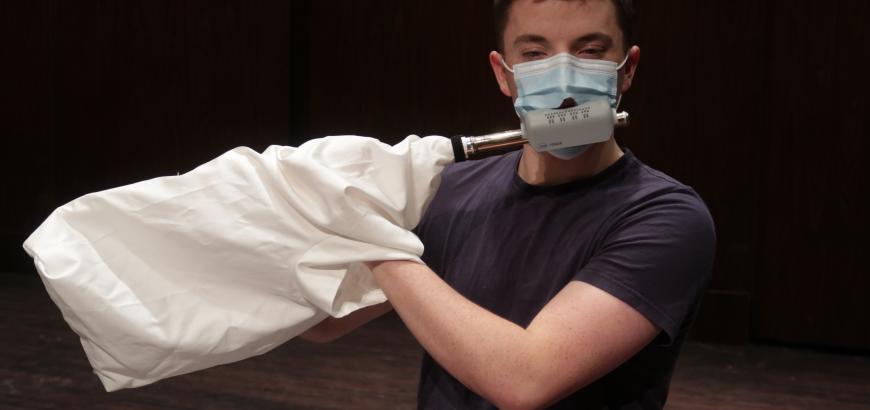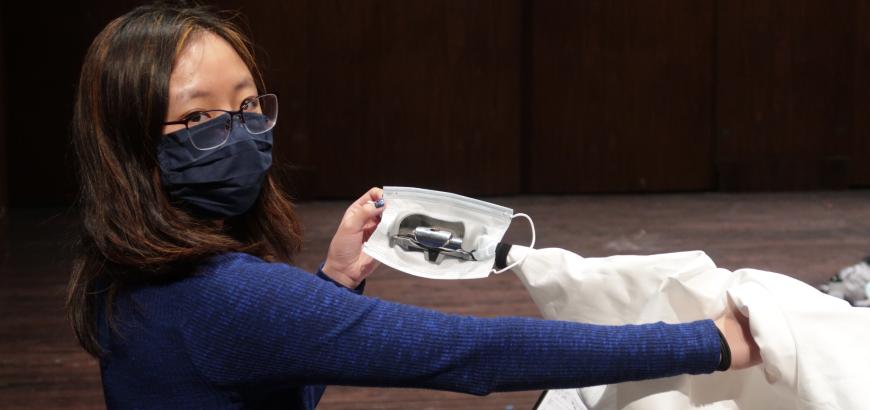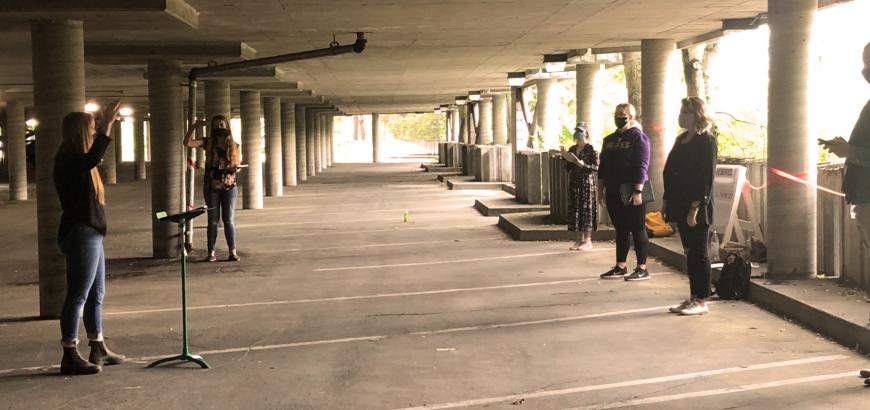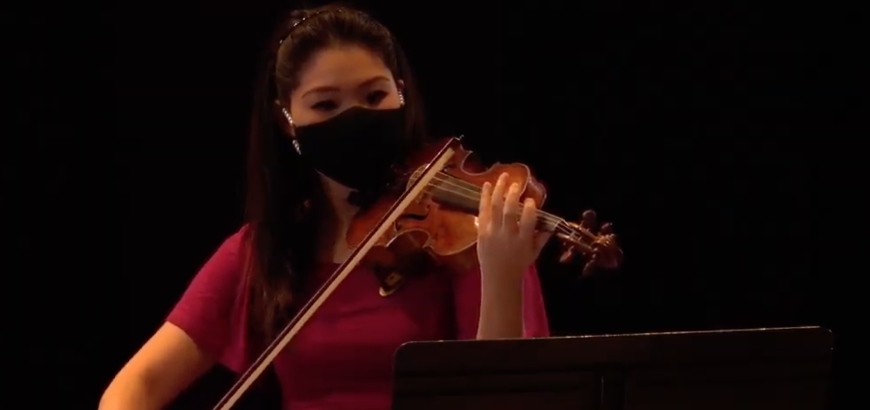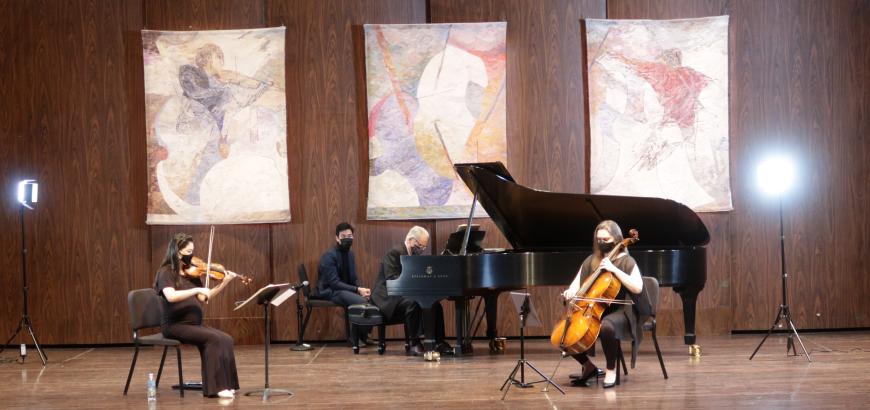Students and faculty at the School of Music performed and studied music in Autumn 2020 with some dramatic modifications to format and staging. With nearly all classes held online, music students worked and studied from around the globe but also in some specialized settings on the University of Washington campus.
"Every student and faculty musician who has been involved in live rehearsal and performance has taken the safety measures very seriously, which has allowed the ensembles to continue all quarter,” says School of Music Director JoAnn Taricani. "It is remarkable to see how they have adapted."
The challenge of locating large enough spaces for adequate distancing led UW Choirs to hold Autumn Quarter rehearsals in the University’s Padelford parking garage, an open-air environment offering the extra ventilation and spacing required of singers, with members broken into smaller groups meeting on alternate days.
The UW Symphony Orchestra and Wind Ensemble, meanwhile, gathered in small, masked and distanced groups arrayed throughout Meany Hall and took advantage of extra stage time to prepare video and audio recordings for later broadcasts. Beyond physical distancing and mask-wearing, ensemble members took additional precautions: frequent hand sanitizing, instrument masking, special face masks, and 30-minute breaks between 35-minute rehearsal blocks to enable the HVAC systems to turn over the air in each space after use.Wind Ensemble director Timothy Salzman spent the summer preparing for an unprecedented academic year that ultimately included sewing. Along with his wife Jodi, he embarked early on a plan to outfit an ensemble of wind instruments—some of the most concerning in relation to aerosol emissions—in shrouds and masks intended to mitigate risk while still enabling music-making. The pair worked to hand-sew some of the instrument masks when shipments of masks Salzman had ordered were delayed due to massive demand from music programs world wide. The extra layers of protection have created an environment in which performing on wind instruments is possible for the 50-plus students in the group.
David Alexander Rahbee, director of the University of Washington Symphony Orchestra, has used the extra time on the Meany Hall main stage to fine-tune several chamber arrangements of repertoire by Bartók, Caplet, Enescu, and Sibelius and to document his own and the students’ work via audio and video recordings. He released several of those works throughout Autumn Quarter on his own YouTube channel.
For the UW Percussion Studies studio and chair Bonnie Whiting, the challenges of distanced learning in Autumn Quarter led to an innovative collaborative performance project with University of California Institute of the Arts, with students from both institutions performing and rehearsing live over a network throughout the quarter. The groups present their work in a pair of pre-recorded virtual performances (UW: Dec. 12; CalArts: Dec. 13).
“The centerpiece of the program is Anthony Braxton's Composition 221 + 246, in collaboration with students at the California Institute of the Arts,” Whiting says. “I'm very proud of the way we made this work, even with folks in three different states. CalArts also plans to stream a longer version of the Braxton (encompassed in his Ghost Trance Music) on the 13th, so we'll have a very nice exchange and a mini-festival that celebrates music-making in our radically-changed environment.”
In the radically changed environment of a music school weathering a world pandemic, new collaborations are born, new skills and technologies embraced, and unexpected upsides are revealed.
“I don’t think I’ve ever played a concert where I’ve been able to warm up on stage right until ten seconds before we went live,” said faculty cellist Sæunn Thorsteinsdóttir in a discussion following her Nov. 16 Meany hall concert with colleagues Craig Sheppard and Rachel Lee Priday, performed in an empty theater. “I have to say, that’s a positive.” Priday agreed and added her own thoughts, widely shared among musicians and scholars at the School of Music: “Almost a year, three quarters of a year, into the pandemic, we’re still figuring out how little details affect us when we are performing,” she said. "We spent our lives kind of learning a certain way to perform, and little things make such a difference. Even just the spacing and sight lines really do make us adjust, but we are just really grateful to be able to do this.”
Bridgit Long, a School of Music master’s student in oboe performance and a key producer of the Wind Ensemble’s illuminisolation project, summed up in her abstract for the project the aims and inherent optimism of the new curriculum:
"illuminisolation is a fresh and creative conjunction of music, technology, and collaboration," she wrote. "It represents how even during these difficult times, instead of being driven apart, we might continue to connect with each other through art and music."
